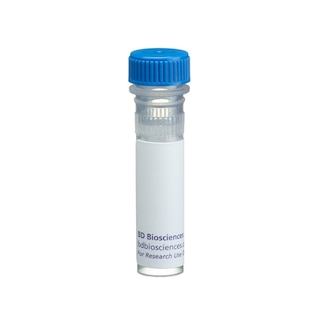-
Reagents
- Flow Cytometry Reagents
-
Western Blotting and Molecular Reagents
- Immunoassay Reagents
-
Single-Cell Multiomics Reagents
- BD® OMICS-Guard Sample Preservation Buffer
- BD® AbSeq Assay
- BD® OMICS-One Immune Profiler Protein Panel
- BD® Single-Cell Multiplexing Kit
- BD Rhapsody™ ATAC-Seq Assays
- BD Rhapsody™ Whole Transcriptome Analysis (WTA) Amplification Kit
- BD Rhapsody™ TCR/BCR Next Multiomic Assays
- BD Rhapsody™ Targeted mRNA Kits
- BD Rhapsody™ Accessory Kits
-
Functional Assays
-
Microscopy and Imaging Reagents
-
Cell Preparation and Separation Reagents
-
- BD® OMICS-Guard Sample Preservation Buffer
- BD® AbSeq Assay
- BD® OMICS-One Immune Profiler Protein Panel
- BD® Single-Cell Multiplexing Kit
- BD Rhapsody™ ATAC-Seq Assays
- BD Rhapsody™ Whole Transcriptome Analysis (WTA) Amplification Kit
- BD Rhapsody™ TCR/BCR Next Multiomic Assays
- BD Rhapsody™ Targeted mRNA Kits
- BD Rhapsody™ Accessory Kits
- United States (English)
-
Change country/language
Old Browser
This page has been recently translated and is available in French now.
Looks like you're visiting us from {countryName}.
Would you like to stay on the current country site or be switched to your country?




Western blot analysis of NFATc1. Lysate from Jurkat T cells was probed with anti-NF-ATc1 (Cat. No. 556602). The antibody identifies NF-ATc1 isoforms at a range of molecular weights from ~100 to 120 kDa.


BD Pharmingen™ Purified Mouse Anti-NF-ATc1

Regulatory Status Legend
Any use of products other than the permitted use without the express written authorization of Becton, Dickinson and Company is strictly prohibited.
Preparation And Storage
Recommended Assay Procedures
7A6 may be used for western blot analysis of NF-ATc1 (1-2 µg/ml). Note that while the predicted M W of NF-ATc is ~100 kDa, the observed M W may range between 100 to 120 kDa due to post-translational modification of NF-ATc. Other applications include immunoprecipitation (2 µg/ml), mobility shift assays (EMSA) and immunofluorescence microscopy of paraformaldehyde-fixed, tissue cultured cells. Jurkat human T cells (ATCC TIB-152) are suggested as a positive control for expression of NF-ATc.
Product Notices
- Since applications vary, each investigator should titrate the reagent to obtain optimal results.
- Please refer to www.bdbiosciences.com/us/s/resources for technical protocols.
- Caution: Sodium azide yields highly toxic hydrazoic acid under acidic conditions. Dilute azide compounds in running water before discarding to avoid accumulation of potentially explosive deposits in plumbing.
Companion Products


The NF-AT family of transcription factors are regulators of early immune response genes in T cells following their activation by CD40L, FasL and nterleukins including IL-2, -3, -4 and -5. NF-AT proteins function in both signal transduction and transcription control. The DNA binding, active NF-AT complex contains a cytoplasmic, Ca2+/calcineurin dependent, cyclosporin sensitive subunit, designated NF-ATc, which is present in the cytoplasm of resting cells. Upon cell activation, NF-ATc is dephosphorylated and thus activated by calcineurin, resulting in rapid translocation of NF-ATc to the nucleus. The active NF-AT complex also contains a nuclear component, NF-ATn. In vitro, NF-AT cooperates with the mitogenic transcription factor AP-1 to induce multiple cytokine genes. NF-ATc is encoded by four genes: NF-ATc1 (originally named NF-ATc), NF-ATc2 (originally named NF-ATp), NF-ATc3 (NF-AT3) and NF- ATc4 (NF-AT4). These proteins are differentially expressed in tissues, suggesting that each may activate distinct sets of genes. NF-ATc1 is expressed in lymphoid organs and is upregulated in activated T cell and thymocytes. NF-ATc1 is required for the development of T cells and has been shown to contribute to the production of IL-2 and the development of Th2 responses.
7A6 recognizes human and mouse NF-ATc1. The antibody recognizes a region between amino acids 197 to 304 of human NF-ATc1, which lies outside the region of homology between NF-ATc1 and NF-ATc2.3 Please note that in the original publication for the antibody (Northrop et al. 1994), the clone name 7A6 is not specifically identified.
Development References (5)
-
Crabtree GR. Contingent genetic regulatory events in T lymphocyte activation. Science. 1989; 243(4889):355-361. (Biology). View Reference
-
Northrop JP, Ho SN, Chen L. NF-AT components define a family of transcription factors targeted in T-cell activation. Nature. 1994; 369(6480):497-502. (Clone-specific: Immunoprecipitation). View Reference
-
Timmerman LA, Clipstone NA, Ho SN, Northrop JP, Crabtree GR. Rapid shuttling of NF-AT in discrimination of Ca2+ signals and immunosuppression. Nature. 1996; 383(6603):837-840. (Clone-specific: Immunofluorescence, Immunoprecipitation). View Reference
-
Timmerman LA, Healy JI, Ho SN, Chen L, Goodnow CC, Crabtree GR. Redundant expression but selective utilization of nuclear factor of activated T cells family members. J Immunol. 1997; 159(6):2735-2740. (Clone-specific: Immunoprecipitation). View Reference
-
Yoshida H, Nishina H, Takimoto H. The transcription factor NF-ATc1 regulates lymphocyte proliferation and Th2 cytokine production. Immunity. 1998; 8(1):115-124. (Biology). View Reference
Please refer to Support Documents for Quality Certificates
Global - Refer to manufacturer's instructions for use and related User Manuals and Technical data sheets before using this products as described
Comparisons, where applicable, are made against older BD Technology, manual methods or are general performance claims. Comparisons are not made against non-BD technologies, unless otherwise noted.
For Research Use Only. Not for use in diagnostic or therapeutic procedures.